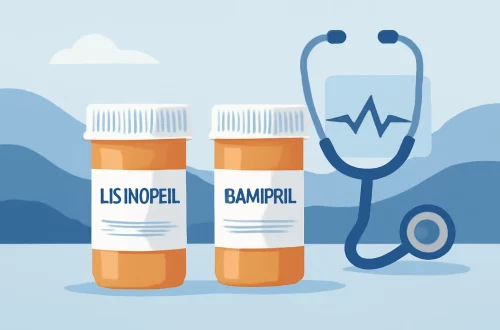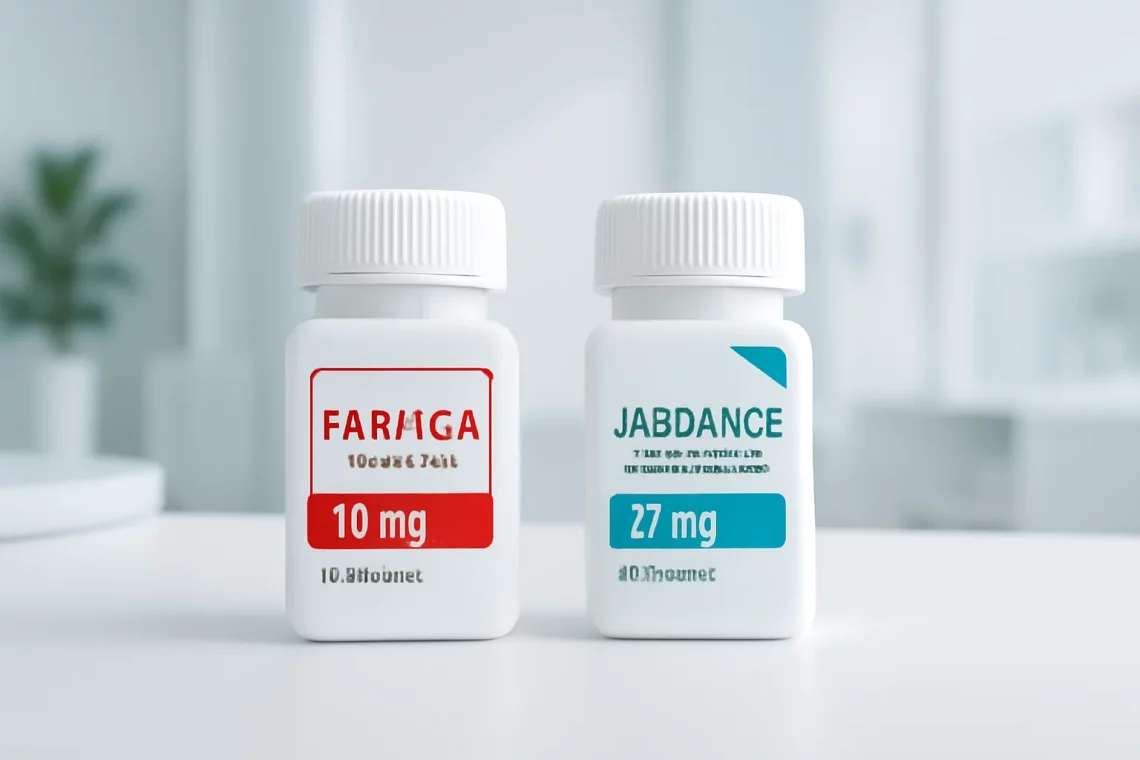Health
-
Farxiga vs Tradjenta: A Comprehensive Comparison for Diabetes Management
In the world of diabetes management, the choice of medication can significantly impact a patient’s quality of life. With the rise of diabetes prevalence globally, various medications have emerged to help individuals manage their blood sugar levels effectively. Among these, Farxiga and Tradjenta are two commonly prescribed medications that serve distinct purposes in diabetes treatment. Understanding the differences and similarities between these two drugs can empower patients and healthcare providers to make informed decisions tailored to individual needs. Farxiga, known generically as dapagliflozin, is part of a class of medications called SGLT2 inhibitors. It works by preventing the reabsorption of glucose in the kidneys, allowing excess sugar to be excreted…
-
Eliquis vs Xarelto Which Anticoagulant is Right for You
Anticoagulants play a crucial role in modern medicine, especially for patients at risk of developing blood clots. Two of the most commonly prescribed anticoagulants are Eliquis (apixaban) and Xarelto (rivaroxaban). Both medications belong to a class of drugs known as direct oral anticoagulants (DOACs) and are used to reduce the risk of stroke and blood clots in patients with conditions such as atrial fibrillation or venous thromboembolism. The choice between Eliquis and Xarelto can be a significant decision for both patients and healthcare providers. Factors such as efficacy, safety profiles, dosing regimens, and potential drug interactions must be considered. Each medication has its unique characteristics that can influence treatment decisions…
-
Azithromycin vs Erythromycin: Key Differences and Uses Explained
Azithromycin and erythromycin are two widely used antibiotics that belong to the macrolide class of medications. They are both effective in treating various bacterial infections by inhibiting bacterial protein synthesis, which ultimately leads to the death of the bacteria. Both drugs are commonly prescribed for respiratory tract infections, skin infections, and certain sexually transmitted infections, among others. Despite their similarities, there are significant differences between the two that can influence a physician’s choice of treatment. In clinical practice, understanding these differences is essential for selecting the appropriate antibiotic that will effectively target the infection while minimizing potential side effects. Factors such as bacterial resistance, patient tolerance, and specific infection types…
-
Naltrexone vs Contrave: Understanding the Key Differences and Benefits
When it comes to weight management and addiction treatment, Naltrexone and Contrave are two terms that often come up in discussions among healthcare professionals and patients alike. As the prevalence of obesity and substance use disorders continues to rise, understanding the medications available for these conditions has never been more critical. Both Naltrexone and Contrave have distinct mechanisms of action, indications, and side effect profiles, making them suitable for different patient populations. This article aims to demystify these medications, shedding light on their uses, benefits, and potential drawbacks. Naltrexone is primarily known as an opioid receptor antagonist, often prescribed to help individuals overcome addiction to opioids or alcohol. By blocking…
-
Xanax vs Librium: Understanding the Differences and Uses
Xanax and Librium are two medications that fall under the category of anxiolytics, commonly prescribed to manage anxiety and related disorders. While both drugs serve a similar purpose, they possess distinct characteristics, mechanisms of action, and potential side effects. Understanding these differences can be crucial for patients and healthcare providers alike. The increasing prevalence of anxiety disorders in today’s fast-paced world has heightened the demand for effective treatment options. As such, a thorough examination of anxiety medications like Xanax and Librium is essential for informed decision-making. When discussing anxiolytics, it’s important to recognize that they interact with the brain’s neurotransmitters, particularly gamma-aminobutyric acid (GABA). This interaction can lead to a…
-
Entyvio vs Skyrizi: A Comprehensive Comparison for Patients
In the realm of modern medicine, the treatment landscape for chronic autoimmune conditions has evolved significantly over the past few years. With advancements in biopharmaceuticals, patients now have more options than ever before. Among these, Entyvio and Skyrizi have emerged as popular choices for managing conditions such as ulcerative colitis and Crohn’s disease, as well as psoriasis and psoriatic arthritis. Both medications are designed to target specific pathways in the immune system, aiming to reduce inflammation and improve the quality of life for patients. As these treatments gain traction, patients and healthcare providers must navigate their unique attributes, benefits, and potential side effects. Understanding the nuances of each medication is…
-
Farxiga vs Jardiance: A Comprehensive Comparison of Diabetes Medications
In recent years, the landscape of diabetes management has evolved significantly, with new medications emerging to help patients control their blood sugar levels more effectively. Two prominent medications in this arena are Farxiga and Jardiance, both of which belong to a class of drugs known as SGLT2 inhibitors. These medications have gained attention for their ability to lower glucose levels and offer additional benefits, such as weight loss and cardiovascular protection. With diabetes being a chronic condition that affects millions of people worldwide, understanding the differences and similarities between these two medications is crucial for patients and healthcare providers alike. As more individuals seek information on how to manage their…
-
Atorvastatin vs Vytorin: Which Cholesterol Medication Is Right for You?
Atorvastatin and Vytorin are two commonly prescribed medications that play a significant role in managing cholesterol levels and reducing the risk of cardiovascular diseases. Statins are a class of drugs that include atorvastatin, which primarily works by inhibiting an enzyme involved in cholesterol production in the liver. On the other hand, Vytorin combines two active ingredients, ezetimibe and simvastatin, to lower cholesterol levels through dual mechanisms: reducing cholesterol absorption in the intestines and decreasing its production in the liver. The global prevalence of high cholesterol levels and associated cardiovascular conditions has made the management of these health issues increasingly important. Millions of people rely on medications like atorvastatin and Vytorin…
-
Cyclobenzaprine vs Chlorzoxazone: Key Differences and Uses Explained
Cyclobenzaprine and chlorzoxazone are both medications commonly used to treat muscle spasms and discomfort. Although they serve similar purposes, these two drugs possess distinct properties, mechanisms of action, and side effects profiles. Understanding the nuances between cyclobenzaprine and chlorzoxazone can empower patients and healthcare providers to make informed decisions regarding treatment options. Muscle spasms can arise from various conditions, including injuries, overuse, or underlying medical issues. The sensation of tightness, pain, or restricted movement can significantly impact daily life, leading individuals to seek relief through medication. While both cyclobenzaprine and chlorzoxazone are classified as muscle relaxants, they differ in their chemical structure and how they interact with the nervous system.…
-
Narcan vs Naloxone: Understanding the Key Differences and Uses
The opioid crisis has become a significant public health concern, affecting millions worldwide. As the rates of opioid overdoses continue to rise, the need for effective intervention methods has never been more critical. Among the tools developed to combat this crisis, Narcan and naloxone have gained widespread attention and use. Both are essential in reversing the effects of opioid overdoses, but many people may not understand the nuances between the two. Narcan is a brand name for the generic medication naloxone, which is an opioid antagonist. When administered, naloxone can rapidly restore normal breathing in someone experiencing an opioid overdose, effectively saving lives. The public health community has increasingly advocated…






































